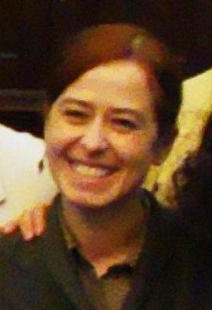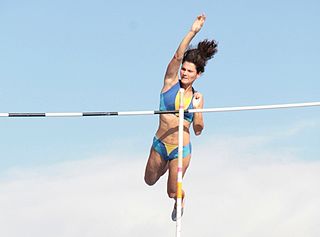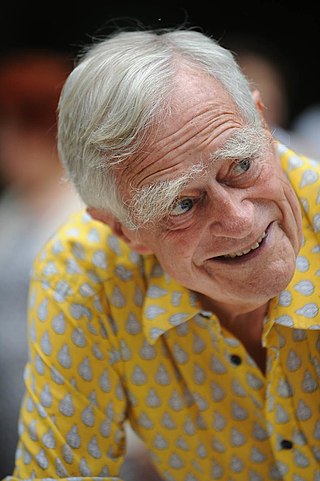Related Research Articles

Birds of prey or predatory birds, also known as raptors, are hypercarnivorous bird species that actively hunt and feed on other vertebrates. In addition to speed and strength, these predators have keen eyesight for detecting prey from a distance or during flight, strong feet with sharp talons for grasping or killing prey, and powerful, curved beaks for tearing off flesh. Although predatory birds primarily hunt live prey, many species also scavenge and eat carrion.

The Strait of Messina is a narrow strait between the eastern tip of Sicily and the western tip of Calabria in Southern Italy. It connects the Tyrrhenian Sea to the north with the Ionian Sea to the south, within the central Mediterranean. At its narrowest point, between Torre Faro and Villa San Giovanni, it is 3.1 km (1.9 mi) wide. At the city of Messina, it is 5.1 km (3.2 mi) wide. The strait's maximum depth is about 250 m (820 ft).

The Halvergate Marshes are an area of grazing marsh in the east of the English county of Norfolk. They form part of the area of The Broads and lie between the River Bure and the River Yare, bordering Breydon Water on the east. The marshes cover an area of around 2,642 hectares An area of 1,432.7-hectare (3,540-acre) is a biological Site of Special Scientific Interest. Some areas are also in the Breydon Water Local Nature Reserve, the Broadland and Breydon Water Ramsar sites, The Broads Special Area of Conservation, and The Broads and Breydon Water Special Protection Areas.

Bird migration is a seasonal movement of birds between breeding and wintering grounds that occurs twice a year. It is typically from north to south or from south to north. Migration is inherently risky, due to predation and mortality.

Jebel Musa is a mountain in the northernmost part of Morocco, on the African side of the Strait of Gibraltar. It is part of the Rif mountain chain. The mountain is generally identified as the southern Pillar of Hercules, Mons Abila.
Sir John Hartley Lawton is a British ecologist, RSPB Vice President, President of the Yorkshire Wildlife Trust, President of The Institution of Environmental Sciences, Chairman of York Museums Trust and President of the York Ornithological Club.

The green racket-tail is an endemic parrot of the Philippines where it is found on Luzon and Marinduque. This species was once common, but is rapidly declining and is currently classified as endangered due to lowland deforestation and capture for cage-bird trade. The population is now estimated to be just 1,000 - 2,499 mature individuals and is continuing to decline with many local extinctions in its former range.
LIPU, the Lega italiana protezione uccelli is an Italian charitable organisation, founded in 1965 and devoted to the protection of the country's wildlife with a particular focus on birds. It has a membership of 42,000 and is the Italian partner of BirdLife International. Moreover, it is one of the most important Italian environmentalist organizations with WWF Italia, Legambiente and Greenpeace Italia.

The Gallocanta Lake is an endorheic lake in Aragon, Spain. It is located between the Teruel and Zaragoza provinces. The lake is located just to the south of Gallocanta village, between the Aragonese comarcas of Campo de Daroca and Comarca del Jiloca. This lake is situated on a high continental plain at an altitude of almost 1,000 m.
Emma Must is an English environmental activist, teacher, and poet.

The nature conservation site Poda was declared a protected area in 1989 by the Bulgarian Ministry of Water and Environment. It was the first protected area in Bulgaria that is completely managed and maintained by a non-governmental organization, the Bulgarian Society for the Protection of Birds (BSPB). BSPB prepares and implements activities adopted by the Council of Minister's Management Plan, but receives its funding completely from entrance fees, souvenirs sold, and donations. Through this arrangement, it aims to be a sustainable model for nature conservation, environmental education, and eco-tourism.

The World Wide Fund for Nature (WWF) is a Swiss-based international non-governmental organization founded in 1961 that works in the field of wilderness preservation and the reduction of human impact on the environment. It was formerly named the World Wildlife Fund, which remains its official name in Canada and the United States. WWF is the world's largest conservation organization, with over five million supporters worldwide, working in more than 100 countries and supporting around 3,000 conservation and environmental projects. They have invested over $1 billion in more than 12,000 conservation initiatives since 1995. WWF is a foundation with 65% of funding from individuals and bequests, 17% from government sources and 8% from corporations in 2020.

The fauna of Italy comprises all the animal species inhabiting the territory of the Italian Republic and its surrounding waters. Italy has the highest level of faunal biodiversity in Europe, with over 57,000 species recorded, representing more than a third of all European fauna. This is due to various factors. The Italian peninsula is in the centre of the Mediterranean Sea, forming a corridor between central Europe and North Africa, and it has 8,000 km (5,000 mi) of coastline. Italy also receives species from the Balkans, Eurasia, and the Middle East. Italy's varied geological structure, including the Alps and the Apennines, Central Italian woodlands, and Southern Italian Garigue and Maquis shrubland, also contribute to high climate and habitat diversity.

Małgorzata Górska is a Polish activist and conservationist, who played an integral role in the movement to protect the Rospuda Valley in north-eastern Poland, one of Europe's last true wilderness areas. She comes from Trzcianne region in Podlaskie Voivodship in Poland.

Anna Giordano Bruno is a retired Italian track and field athlete who specialised in the pole vault.
Raoul du Toit is a Zimbabwean environmentalist. He was awarded the Goldman Environmental Prize in 2011, for his efforts on protection of the black rhino. Since 1986, Raoul du Toit has helped in coordinating rhino conservation initiatives in Zimbabwe, working tirelessly through the turmoil and turbulence of Robert Mugabe's dictatorship. He is the Africa Rhino Program Coordinator for the International Rhino Foundation, as well as Director of the Lowveld Rhino Trust which he founded.

Hans Lukas "Luc" Hoffmann was a Swiss ornithologist, conservationist, and philanthropist. He co-founded the World Wildlife Fund (WWF), helped establish the Ramsar Convention for the protection of wetlands, and set up the Tour du Valat research centre in the Camargue area of France.

The Mongolian Ornithological Society), was founded in 1999 in the capital city, Ulaanbaatar. It is non-profit environmental organisation dedicated to the research and conservation of birds and their habitats, and also other wildlife in Mongolia. It publishes a peer-reviewed annual scientific journal, Ornis Mongolica, and other bird-related books, guidebooks and papers on bird research works and conservation activities in Mongolia and other countries. The Society raises funds for conservation and educational activities by arranging bird watching and wildlife tours to different parts of Mongolia. The society puts great emphasis on educating young researchers and raising public awareness on conservation. Its board members consist of well-known ornithologists, biologists and ecologists from Mongolia and other countries. In collaboration with the Ornithological Laboratory at the National University of Mongolia, a total of more than 30 scientific theses by bachelors, masters, and Ph.D. students have been supervised by members of the society.

Geloi Wetland is a private nature conservation area located in the municipality of Gela, in the province of Caltanissetta, created in 2017.
Laura Lynne Williams was a Russian-American ecologist, founder of the Russian World Wide Fund for Nature (WWF) branch and WWF office on Kamchatka. She was also director of the Wild Salmon Center, as well as a journalist, writer, and equine-assisted therapist.
References
- ↑ "Giordano, now 35" says this year-2000 article on her Archived 2008-12-11 at the Wayback Machine .
- 1 2 3 "Anna Giordano’s activity highlights" Archived 2014-04-24 at the Wayback Machine , The Alcorso Foundation, 2010.
- 1 2 3 The page on Anna Giordano Archived November 23, 2010, at the Wayback Machine in Goldman Prize's web site.
- ↑ Article on Anna Giordano in FRONTLINE/World web site.
- 1 2 Sancton, Thomas, "Anna Giordano — Making the Skies Safer" Archived 2008-12-11 at the Wayback Machine , Heroes for The Planet gallery in Time.com web site.
- ↑ A letter by Anna Giordano, to Brian Horkley, published in the September 2005 issue of Ali Archived 2011-07-24 at the Wayback Machine , a publication of the British society of LIPU supporters.